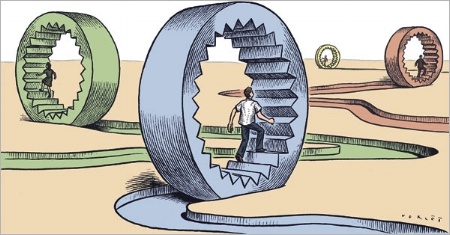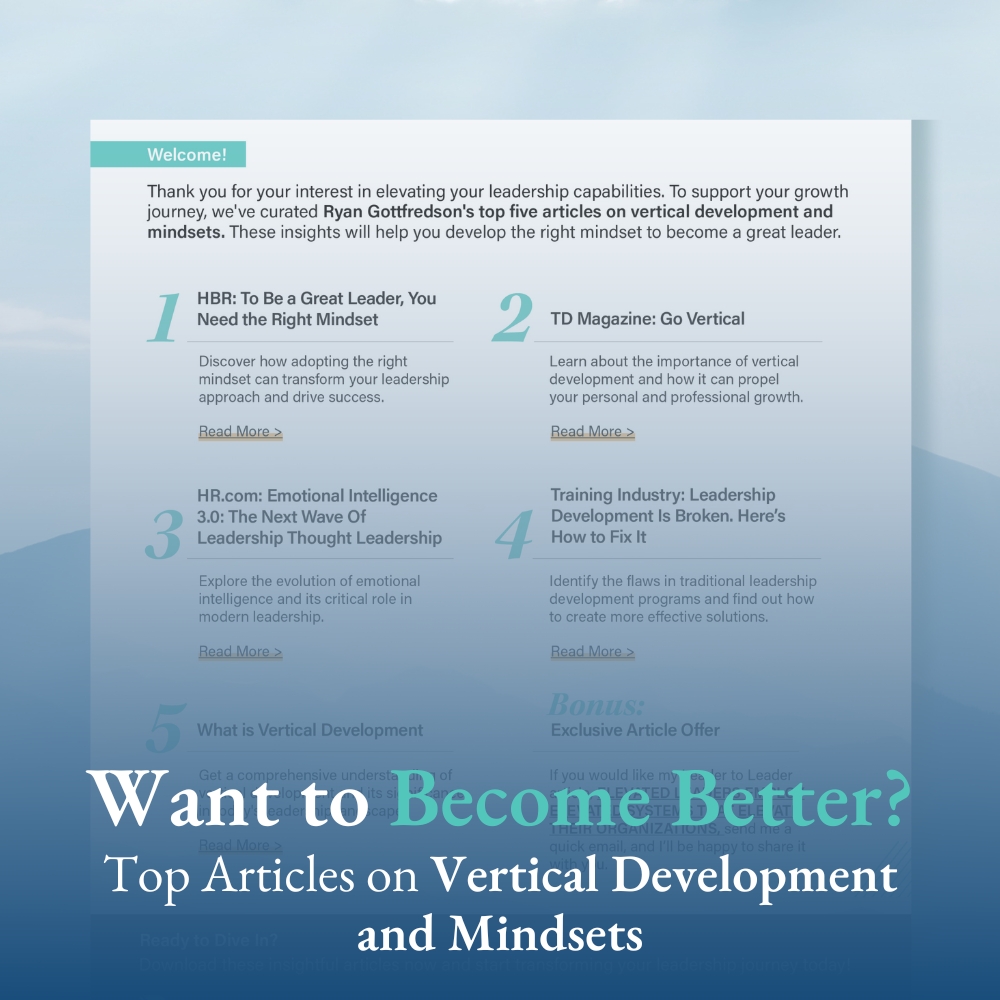This is the third article in a four-part series on mindfulness. The first article defined what mindfulness is. The second article listed the 25 research-backed benefits of mindfulness. This article will discuss how we can improve our mindfulness. The final article in this series is entitled: To Become Mindful, You Must Know Your Mindsets.
I want you to engage in two quick exercises:
1. Take a few seconds to pay attention to each of your senses:
-
What is something in front of you that is visually appealing or distracting?
-
Pay attention to where your body is making contact with a chair or the ground. How does that feel?
-
What can you hear at this moment?
-
Can you smell anything?
-
What can you taste?
2. Now, breathe in for four seconds, hold that breath for four seconds, breathe out for four seconds, hold that breath out for four seconds; and repeat for a few more cycles.

These are two different types of mindfulness practices, of several. The purpose of these and others that I will discuss below is that they are designed to help you attend, with awareness, to your present moment experiences; or in other words, be mindful.
This present-moment awareness contrasts with much of our daily life experiences, in which we often find our minds wandering, running on autopilot, or suppressing unwanted experiences.
In fact, some research has suggested that 90% of our daily thoughts, actions, judgments and feelings are driven by our non-conscious or mindless processes, including our habits and our reactions.

There are different ways to think about mindfulness.
First, mindfulness can be described as a trait, meaning that it is a way that we can describe someone. For example, “Ryan is not very mindful” or “Ryan is generally quite mindful.”
But, mindfulness can also be described as a state, meaning the degree to which one is currently in a mindful state. For example, “For the last 10 minutes, Ryan was in a very mindful state. He was able to pay attention to his internal and external stimuli in a manner that did not evoke judgment or evaluation.”
I also find it helpful to think of mindfulness as a muscle. One of the things that you may have realized during the initial exercises is just how quickly our minds want to race off to other places. If our minds are really quick to race off, it suggest that our mindfulness muscles are weak. But, if we want to gain more of the 25 research-backed benefits of mindfulness, we have got to improve our ability to be mindful. This requires working out and stretching our mindfulness muscles, which is our ability to stay in a present moment awareness state without drifting into thoughts beyond the present moment, like remembering something about the past, thinking about something dealing with the future (e.g., what you are going to do tomorrow), or instinctively reaching for your phone (research has found that people turn on their phone 80 times a day, on average; while millennials check their phones 150 times per day).
How do we strengthen our mindfulness muscles?

There are six different mindfulness practices that I would like to introduce to you, all of which are designed to strengthen your mindfulness muscles. This is not an exhaustive list, but it should point you in the right direction for learning how to exercises your mindfulness muscles.
Meditation
Self-disclosure: I am no meditation expert, but let me explain meditation the way I understand it.
To preface this explanation, let me relate a short story. I recently asked one of my classes if they had ever meditated and if they knew what meditation was. There weren’t many who had ever meditated, and one of the students that said that she meditated regularly said, “Yes, I pray all the time.”
While prayer can be a form of meditation, my experience with both prayer and meditation is that they are different practices.
To me, meditation is setting aside time devoted to attempting to become fully present and aware. For me, it is usually sitting in a chair attempting to focus on what is occurring in the here and now. This often involves focusing on my breathing as a way to let my mind be present and rest. When my mind wanders, as it inevitably does, I become conscious of that and come back to focusing on my breathing.
There are three apps that I have used that have great introductions to meditation:
· Headspace
· Calm
· Mindfulness
These are all paid apps, but they each have a free introductory series on meditation. Of the three, I liked Headspace’s introduction the best and recommend that you try it out. A free app that I have used in my meditation practice is called Insight Timer.
Much of the research that has produced the 25 research-backed ways mindfulness benefits people has focused on the practice of meditation.
Of the research conducted on meditation, results have found that people benefit from as little as five minutes of meditation (particularly in the short term). For example, one study found that five minutes of meditating induced improvements in negotiation performance. But, research has only found that 10 minutes is the amount of time someone should meditate on a daily basis to see consistent and long-lasting effects.
Breathing
Breathing is often an important part of meditation, but at any point in your day, you can engage in this practice by taking a few moments or minutes to just focus on your breathing.
Obviously, one of the main advantages of this exercise is that it can be done at anytime, and it generally has a recentering effect that helps one become more conscious and focused.
There are different styles of breathing, such as the 4x4x4x4 technique that I had you do previously, just regular breathing, or deep breathing.
A friend of mine, Sharon Jakabecy Klehm, is a Certified Corporate Mindfulness and Alexander Technique (technique used to retrain people’s movement and postural habits) trainer. She has a great article describing three mistakes people commonly make when breathing. Simply put, they are:
· Breathing in by lifting your chest and shoulders
· Holding your breath
· Sucking in your belly and controlling your breath
You can read the full article here.
Yoga

To be honest, the only yoga I have done is with a Nintendo Wii. But, the practice of Yoga involves focusing on postural movement, breathing techniques, guided relaxation, and mental techniques that help with working your mindfulness muscles associated with staying present and aware.
Shifting
Shifting is a mental attempt to shift your perspective. This can occur at different levels.
At one level, you can consciously choose to shift your perspective. For example, you can shift your perspective away from your computer or phone, and choose to focus on your hands. As you shift your perspective to your hands, what details stand out to you?
Shifting like this requires that you become more fully present, making you more mindful.
At a deeper level, you can attempt to go from being the actor to being the observer of the actor. As we do this, we are able to take an objective perspective toward ourselves, allowing us to evaluate our emotions, and creating space for us to consciously and intentionally adjust our feelings. For me, it is helpful for me to do this when I am having some conflict with one of my children. By shifting, I am able to better respond to the situation rather than emotionally react.
Intentionality
Similar to shifting is intentionality. Intentionality is consciously attempting to identify your autopilot routines, question them, and either engage in them more mindfully or adjust them.
To engage in this, here are some questions to consider:
· When does being on autopilot help my effectiveness?
· How does being on autopilot help my effectiveness?
· When does being on autopilot hinder my effectiveness?
· How does being on autopilot hinder my effectiveness?
· How do my automatic thoughts and behaviors impact me, my team, my organization?
· What is the risk of continuing these thoughts/behaviors?
· What would be the benefit of changing these thoughts/behaviors?
Mindfulness Courses
From a research perspective, the most support for improving one’s mindfulness in such a way that it has large effects on one’s life is through mindfulness courses or programs. Oftentimes, these are 8 to 10-week programs (2-3 hours per week with 45 minutes of daily at-home practice), although they are frequently cut down to a few weeks or weekends.
Common and research-backed programs include:
· Mindfulness-based stress reduction training
· Mindfulness-based cognitive therapy
· Mindfulness-based mind fit training
Summary
Everyone is capable of greater mindfulness, but it is important to recognize that increasing one’s mindfulness is like exercise. Consistency is key, and it can often be quite effortful and challenging at first. For most of us, letting our minds wander, engaging in self-criticism, ruminating about the past, or worrying about the future is the norm. Being in the present is something we are not used to, and doing so can initially feel unnatural or uncomfortable. In fact, one study found that participants preferred receiving mild electric shocks over being left alone with their thoughts.
Why engage in this effort? Well, because mindfulness has a whole host of benefits. But simply put, by being mindful, present, and aware, we unlock new and better options for our thinking and acting. We become more productive with our thoughts, time, relationships, and life. We become better able to replace our unproductive thoughts with enabling thoughts.
Let me encourage you to experiment with these different techniques so that you and experience the benefits associated with being in mindful states more frequently as well as generally becoming a more mindful, aware, and present person.
In my last article in this series, I will be discussing one more cutting-edge way you can become more mindful. It is the technique that I have found to be the most helpful in becoming more mindful, and is thus deserving of a full article.










